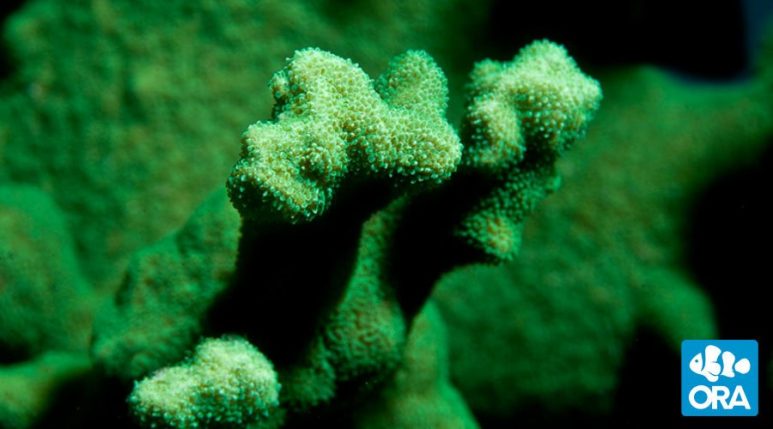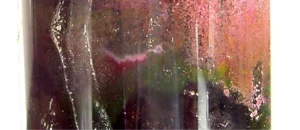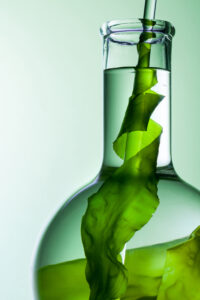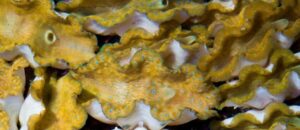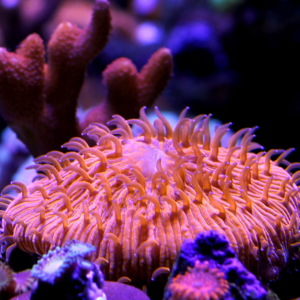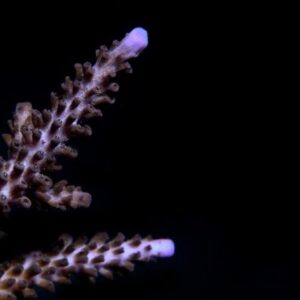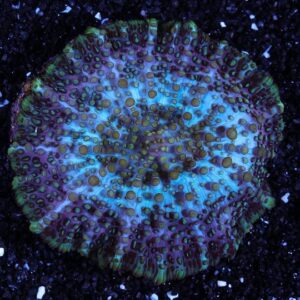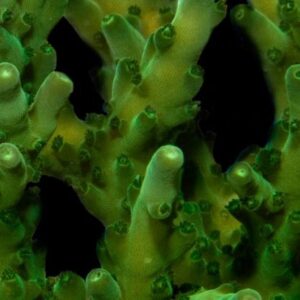Description
Psammocora (pronounced without the P) is found all over the Indo-Pacific. This particular strain was obtained by ORA from one of its first employees, Kelly Hunter. Hunter says that the coral was imported from Palau in 1994. ORA has aquacultured this coral since, naming it after Kelly Hunter. Aquacultured corals are grown in aquariums instead of being collected from the ocean, which comes with benefits that we will discuss later.
Pasammocora is not a common coral in the hobby. Even some devout hobbyists have little to no experience with it. It fits into the hobby-made “SPS” category with similar features as Leptastrea, Montipora, Pavona, and other encrusting SPS corals. This particular Psammocora strain is both encrusting and branching. It will encrust to a respectable size before it starts branching upwards from the base. It has a bright green coloration with a sort of fuzzy velvet appearance. The green coloration will remain consistent under any aquarium lighting, but it looks best under blue-heavy lights.
More on lighting, Psammocora is not picky. It can be placed under low to high lighting, though it will mostly likely look best under medium to high light. More importantly than the lighting intensity is how well you acclimate it to the light. Starting the coral under intense lighting will likely cause bleaching. To avoid this, start the coral in dimmer light and gradually move it into higher light.
As for flow, this coral requires moderate to strong flow to keep it clean. As the coral grows, it will develop a lot of irregular surfaces and structures that are great at collecting detritus. If detritus is allowed to settle on the coral, it can cause die-off. Water flow is important because it also delivers needed nutrients and base elements to the coral. Ideally, the flow should be irregular and random to prevent dead spots and to promote proper growth.
Because this is a stony coral, it requires elevated and stable levels of calcium, alkalinity, and magnesium. With only a few small stony corals, this can be achieved with water changes. However, as you add more corals and your corals grow, you will likely need to implement a calcium reactor, dosing, kalkwasser, or a combination of the three. Although these methods are extremely effective for replenishing base elements, it is easy to cause large fluctuations if you’re not careful. With this sort of thing, less is more until you become more familiar.
Regarding nutrients, a good range to shoot for is 1-5 ppm of nitrates and phosphates as close to 0.01 ppm as possible but not 0. Keep in mind that this is just a general guideline. If you can consistently keep your nitrates at 15 ppm and your phosphates at 0.1 ppm without algae issues, that is more than perfectly acceptable. As for temperature, keep it between 72-78 degrees Fahrenheit and stable.
Finally, let’s discuss feeding. Despite their small polyps, Psammocora are capable feeders if the food is small. The coral may not be able to consume food particles if the water flow is too high, so turn your pumps down if you want to spot feed. At the same time, this isn’t a coral to go out of your way to feed. It gets most of its nutrition from its zooxanthellae. It will likely benefit more from simply dosing your aquarium with amino acids and live phytoplankton, which won’t cause nutrient spikes the way other corals foods can.
Care requirements
Purchase Size: 1 – 2″
Placement: You can place this coral anywhere as long as its lighting and flow needs are met.
Lighting: Low to high.
Flow: Moderate to strong.
Parameters: 72-78° F, pH 8.1-8.4, salinity 32-35 ppt
Calcium: 350-450 ppm
Alkalinity: 8-12 dKH
Magnesium: 1,250-1,350 ppm
More Information
Aquacultured corals such as this one are better adapted to aquarium life and better able to handle the stress of shipping. They are also far less likely to carry pests and disease, but you should still dip and/or quarantine them to be safe. To top it off, aquacultured corals are more sustainable and environmentally friendly!

